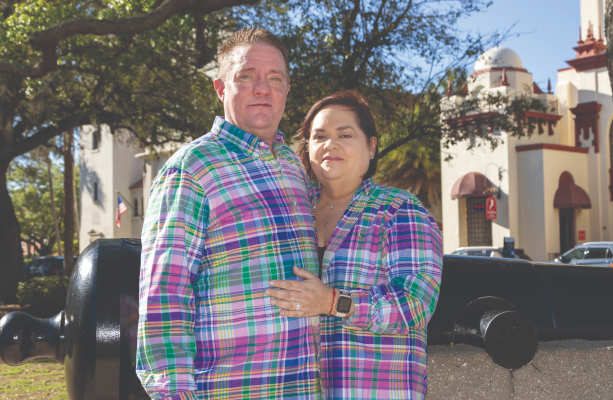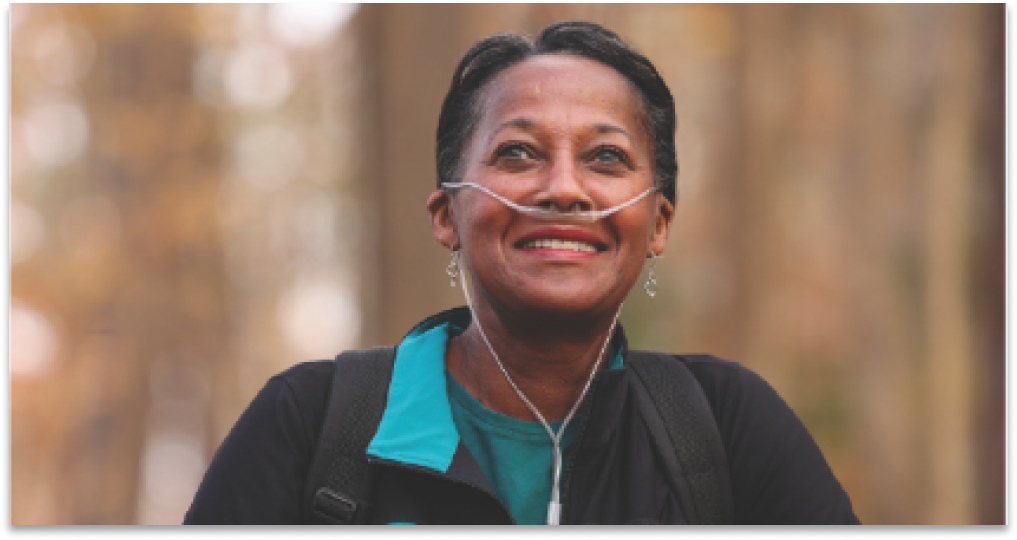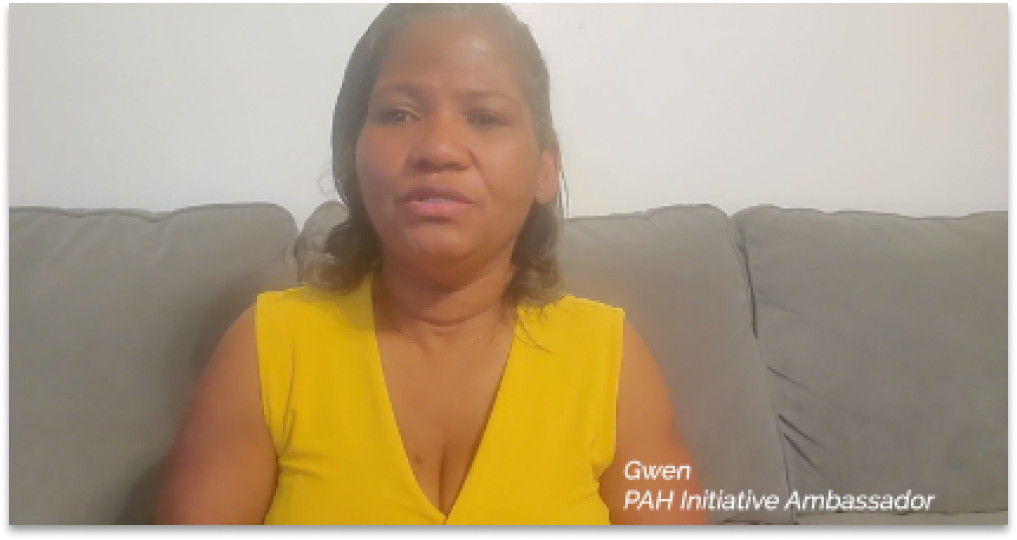
Nayda is a caregiver to her husband, Nathan, who was diagnosed with PAH shortly after they met. Nayda and Nathan are a team, but Nayda knows when to take the time to care for herself, too.
Nancy feels very positive and confident about the way she manages her disease with her healthcare team. She regularly schedules appointments to track her progress, follows the advice that her doctors give to her, and asks questions frequently. It’s helpful for Nancy to compare current and past test results so that she can discuss concerns with her specialist.
A: As a team, you must find the best way to stay positive, healthy, and proactive. Nathan and I attend his medical appointments together and have open and honest conversations with his healthcare team. I help him with his medications by using an app as an alarm that reminds him to take his medicine at specific times. I prepare homemade salt-free meals, make sure to monitor his legs for edema, and remind him to weigh himself daily. Working together is important because we strive for the same goal—keeping Nathan as healthy as possible.
A: When I take a break, I do my manicure and pedicure or treat myself to some home beauty spa days to care for myself. Sometimes I relax by baking some cookies to make Nathan smile. Other times, we go out together to eat a nice meal at a restaurant or just drive around while listening to some music and enjoy each other’s company. Occasionally, when possible, we take a day trip to enjoy a long drive and see the beautiful landscapes.
A: Nathan’s healthcare team was always happy to educate me about PAH, especially during the first few years after his diagnosis. They showed me how to check Nathan for edema and how to connect his oximeter when he was in the hospital. Your loved one’s healthcare team can be a great source of support when you are learning about PAH. As a couple, Nathan and I motivate each other, too. My love for him pushes me to stay positive. I also took the time to learn about Nathan’s childhood health by asking his mother questions. Nathan’s brothers both have a medical background and understanding, so they are more than willing to share their knowledge with me. My mother is my cheerleader, and my father and sister motivate me to stay positive as well.

Sign up to receive future magazines, our email newsletter, and other useful resources to help navigate life with PAH.
Sign UpA: PAH is not only rare but is one of the many invisible illnesses a person could have. Any person who doesn’t know about this condition might think someone with it doesn’t look sick at all unless the person is wearing a nasal cannula and has portable oxygen with them. I visit PAH group pages and connect with other patients to learn about their experiences, help new patients, and motivate and encourage them to get connected. Whenever an opportunity arises for me to educate others about PAH, I educate them about how this condition affects the heart and lungs.
A: In our experience, PAH is a health condition that can be managed with a positive healthcare team and a treatment plan that adapts based on what’s working, or not. There will be changes and sacrifices—and it is difficult—but all those changes will be for the well-being of your loved one, yourself (as a caregiver), and your family. Somedays are better than others. Try to manage each day as it comes and don’t give up hope. Try to put yourself in your loved one’s shoes. They might get upset or angry because they can’t do what they used to do, but it’s OK to ask what you can do to help them feel better. It is very important to have compassion, understanding of the situation, and lots of love for your partner, yourself, and your family. There is a light, and you are not alone!
PAH is a complicated disease that can be difficult to understand. We’ve broken it down for you with easy-to-understand information, simple graphics, and informative videos from a PAH specialist.
Learn More
Learn how Peggy renewed her competitive spirit after her PAH diagnosis and how she won't let an oxygen tank define her.
Competitive Spirit with PAH ⟩
How has knowing their risk status helped Lauren and Karen better understand if their treatment plan is working?
Knowing your PAH Risk Status ⟩
Living with PAH can be a big adjustment and taking care of yourself can make a big difference. But where do you start?
Self-Care and Healthy Living ⟩